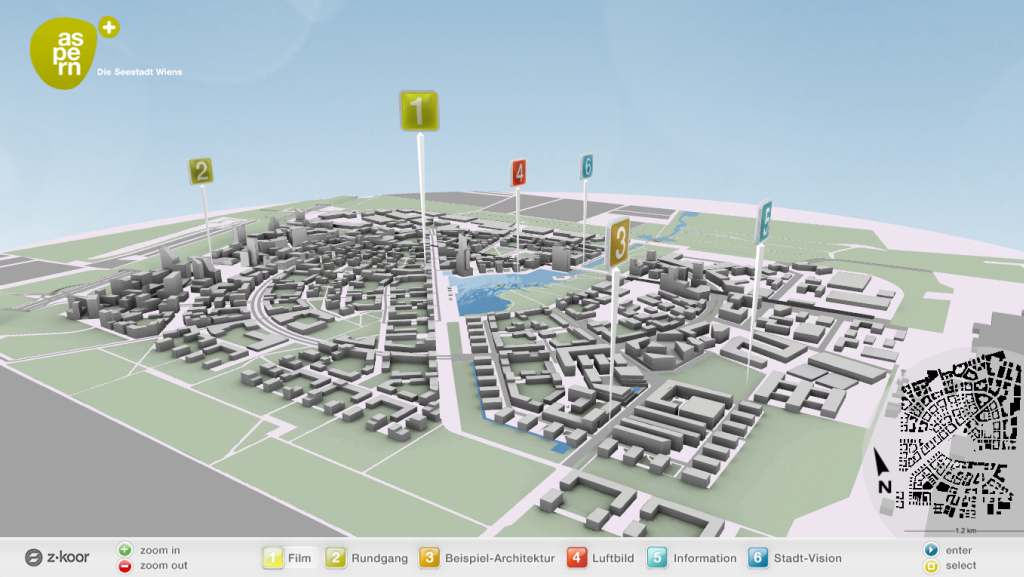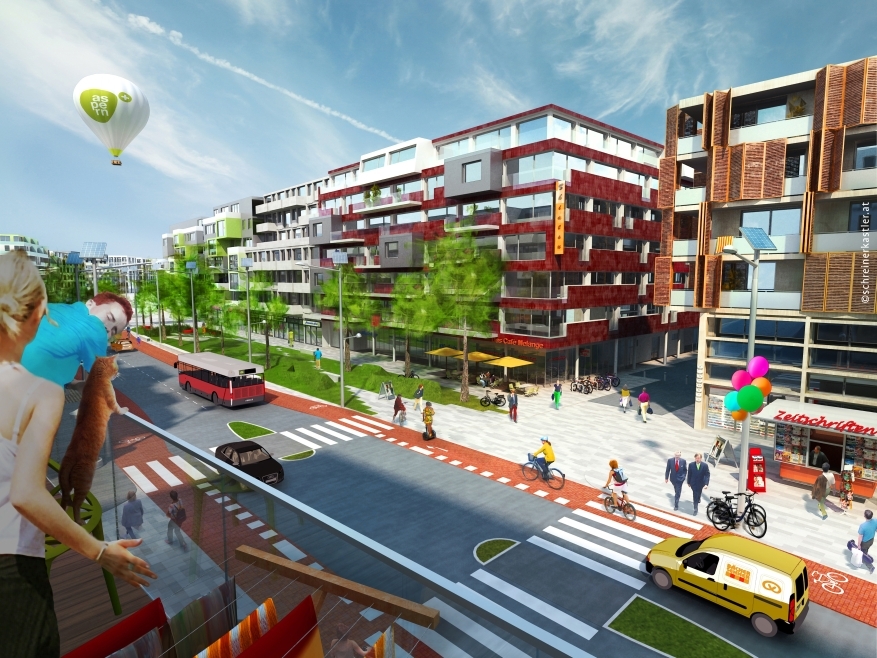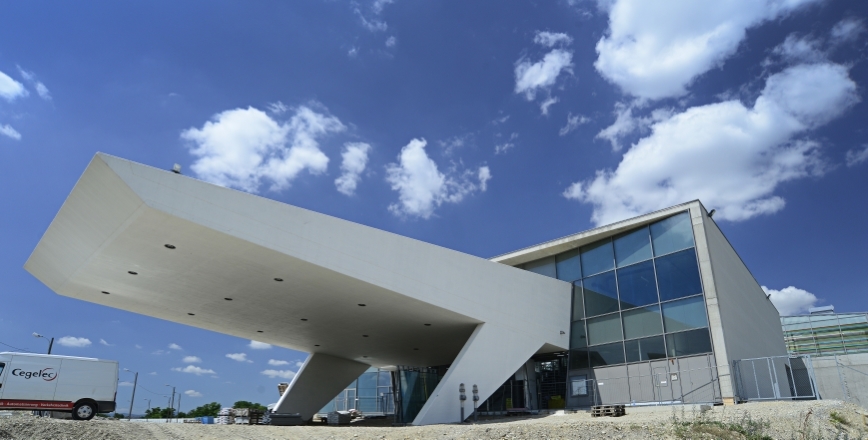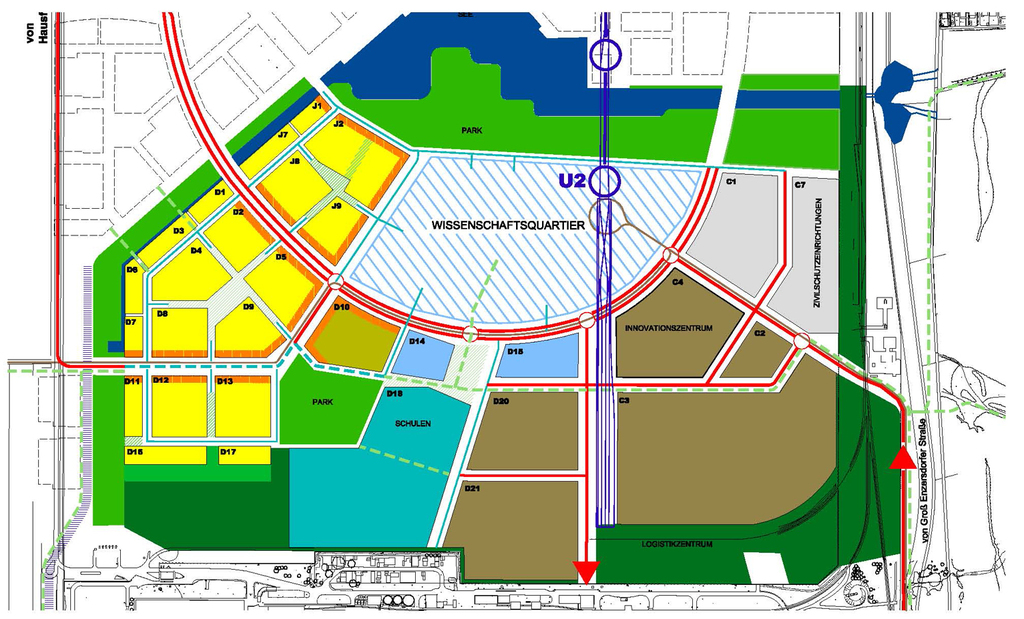Koristite zastareli preglednik. Možda se neće pravilno prikazivati ova ili druge veb stranice.
Trebalo bi da nadogradite ili koristite alternativni preglednik.
Trebalo bi da nadogradite ili koristite alternativni preglednik.
Državna stanogradnja(naselje Stepa Stepanovic na Vozdovcu)
- Začetnik teme shmeksi
- Datum pokretanja
Bulevarac
Advanced
- Učlanjen(a)
- 26.12.2008.
- Poruke
- 2.410
- Pohvaljen
- 1.671
I danas kada se provozam biciklom izmedju cetvorospratnica i dvospratnica u bloku 45 se osecam fantasticno.direktor":1l3begd4 je napisao(la):Mogli su da prekopiraju blok 45 i rijesen problem dobili bi isti broj stanova sa novim fasadama i svi sretni
Voznja izmedju malih zgrada sa zelenilom na svakom cosku, na nekim mestima se zgrade ne vide od zelenila, prostora za decu koliko hoces, kosarkaski, fudbalski, teniski tereni cak i oni veliki soliteri ne smetaju jer ima dovoljno prostora da se niko ne gura. Ima cak i vestacko brdo da se mala deca sankaju.
Fantasticno organizovano naselje meni i danas, iako je toliko godina proslo od njegove gradnje.
astrodule
Professional
Verovatno je već bilo, ali pitam - koliko je parking mesta predviđeno?
Za ovo u Beču verujem da je ispod celog naselja veliki parking?
Za ovo u Beču verujem da je ispod celog naselja veliki parking?
Delija
Professional
- Učlanjen(a)
- 03.01.2010.
- Poruke
- 10.052
- Pohvaljen
- 25.364
2012":1zhl4ffl je napisao(la):Pogledajmo buduće novo naselje u Beču,kopija Nbg samo niže spratnosti..
Богами чак је и спратност иста као код многих нбг блокова из 60их и 70их.
Беч сутра је НБГ од пре 40 година.
Workstyle & Lifestyle
aspern Vienna’s Urban Lakeside combines many aspects that elsewhere embody contradictions: career and family, city and countryside, modern lifestyles and health. The Full Life.
aspern Vienna’s Urban Lakeside will unite many generations and lifestyles in one spot. Half of the total project area is reserved for public open spaces with roads, squares, green zones and recreational areas.
The business district and generous retail areas are just as much an integral part of aspern as are the science, research and training centre and the high-quality, individual flats.
aspern will be an environment where people like to live and work – after all, Vienna’s Urban Lakeside is something different: a city within the city, at the heart of Europe, urban and yet surrounded by greenery, with lots of public and open spaces. And the heart of aspern is the lake that links all of its different elements. With its landscaped banks and promenade, it forms the core of the new city and will become the meeting-point for residents and all those who work in aspern.
“An active, modern environment for The Full Life”
aspern scores also with its urban appeal:
• cultural, leisure and sports facilities
• numerous shops, cafés and restaurants
• a city of short distances
• in proximity to the railway stations and airports of Vienna and Bratislava
• U2 Underground line, bus and tram lines
• well laid-out footpaths and bikeways
• a flexible place for individual projects
Milestones for aspern
The former airfield will be transformed into aspern Vienna’s Urban Lakeside in three major phases.
Starting in 2010, this process will be gradually complemented by traffic and transport links. In the final development stage around 2030, 20,000 persons will be living in aspern, and as many workplaces will have been created.
aspern Vienna’s Urban Lakeside
• covers an area of 2.4 million sq m (roughly equalling the combined 7th and 8th municipal districts of Vienna or 340 football pitches)
• comprises 8,500 housing units for 20,000 residents
• offers 20,000 workplaces: 15,000 of the planned jobs will be in offices and for service providers; 5,000, in production and commercial enterprises
• will be a hub for research, development and education in Vienna
• boasts close-by recreation and leisure areas such as the Danube Wetlands National Park and Danube Island as well as comprehensive networks of footpaths and bikeways
• will be gradually hooked up to the Vienna Underground and regional train system, the international Vienna-Bratislava line and the motorway. In ad
aspern Vienna’s Urban Lakeside combines many aspects that elsewhere embody contradictions: career and family, city and countryside, modern lifestyles and health. The Full Life.
aspern Vienna’s Urban Lakeside will unite many generations and lifestyles in one spot. Half of the total project area is reserved for public open spaces with roads, squares, green zones and recreational areas.
The business district and generous retail areas are just as much an integral part of aspern as are the science, research and training centre and the high-quality, individual flats.
aspern will be an environment where people like to live and work – after all, Vienna’s Urban Lakeside is something different: a city within the city, at the heart of Europe, urban and yet surrounded by greenery, with lots of public and open spaces. And the heart of aspern is the lake that links all of its different elements. With its landscaped banks and promenade, it forms the core of the new city and will become the meeting-point for residents and all those who work in aspern.
“An active, modern environment for The Full Life”
aspern scores also with its urban appeal:
• cultural, leisure and sports facilities
• numerous shops, cafés and restaurants
• a city of short distances
• in proximity to the railway stations and airports of Vienna and Bratislava
• U2 Underground line, bus and tram lines
• well laid-out footpaths and bikeways
• a flexible place for individual projects
Milestones for aspern
The former airfield will be transformed into aspern Vienna’s Urban Lakeside in three major phases.
Starting in 2010, this process will be gradually complemented by traffic and transport links. In the final development stage around 2030, 20,000 persons will be living in aspern, and as many workplaces will have been created.
aspern Vienna’s Urban Lakeside
• covers an area of 2.4 million sq m (roughly equalling the combined 7th and 8th municipal districts of Vienna or 340 football pitches)
• comprises 8,500 housing units for 20,000 residents
• offers 20,000 workplaces: 15,000 of the planned jobs will be in offices and for service providers; 5,000, in production and commercial enterprises
• will be a hub for research, development and education in Vienna
• boasts close-by recreation and leisure areas such as the Danube Wetlands National Park and Danube Island as well as comprehensive networks of footpaths and bikeways
• will be gradually hooked up to the Vienna Underground and regional train system, the international Vienna-Bratislava line and the motorway. In ad
Bulevarac
Advanced
- Učlanjen(a)
- 26.12.2008.
- Poruke
- 2.410
- Pohvaljen
- 1.671
Gde u Bloku 45 ? I ja sam pomislio u jednom trenutku na to, a onda sam shvatio da za time na toj lokaciji nema potrebe. Pa taj ceo deo NBGD je sav u zelenilu, Tamo izmedju zgrada ima toliko vegetacije da na nekim mestima sunce ne moze da se probije do zemlje.
Bloku 45 za razliku od mnogih drugih lokacija zelenilo ne nedostaje. A i to zelenilo na krovu u Bloku 45 bi se samo iz aviona moglo videti.
Bloku 45 za razliku od mnogih drugih lokacija zelenilo ne nedostaje. A i to zelenilo na krovu u Bloku 45 bi se samo iz aviona moglo videti.
Otkucaj Aspern Wienna,ima engleski,vidim da sada primaju rezervacije..laki72":1e1viz3p je napisao(la):ok.. posto?
danas u večenjim novostima izašao intervju sa direktorom GDS-a. da se čovek iznervira kad ga čita.
uglavnom kaže čovek da ako stanovnici hoće osnovne stvari kao što su dom zdravlja, vrtići, super market, onda cena ne treba da bude 1290 već mnogo veča. pri tome direktor GDS-a je zaboravio da napomene da pri kupovini stana kupci stepe su već platili oko 200 evra po kvadratu za izgradnju takvih stvari (uređenje gradskog građevinskog zemljišta), i da je samo na osnovu toga uzeto oko 50 miliona evra, i da su te pare više nego dovoljne za izgradnju doma zdravlja, dva vrtića, škole...
umesto toga oće da im proguraju benzinsku pumpu (za njihovo dobro po rečima direktora). i umesto doma zdravlja oće da proguraju neko istureno odeljenje, i gomila takvih stvari...
uglavnom normalnom čoveku se želudac prevrće čitajući to.
uglavnom kaže čovek da ako stanovnici hoće osnovne stvari kao što su dom zdravlja, vrtići, super market, onda cena ne treba da bude 1290 već mnogo veča. pri tome direktor GDS-a je zaboravio da napomene da pri kupovini stana kupci stepe su već platili oko 200 evra po kvadratu za izgradnju takvih stvari (uređenje gradskog građevinskog zemljišta), i da je samo na osnovu toga uzeto oko 50 miliona evra, i da su te pare više nego dovoljne za izgradnju doma zdravlja, dva vrtića, škole...
umesto toga oće da im proguraju benzinsku pumpu (za njihovo dobro po rečima direktora). i umesto doma zdravlja oće da proguraju neko istureno odeljenje, i gomila takvih stvari...
uglavnom normalnom čoveku se želudac prevrće čitajući to.
direktor
Professional
- Učlanjen(a)
- 10.10.2008.
- Poruke
- 42.675
- Pohvaljen
- 58.363
Stanari naselja" Stepa Stepanović" peticijom traže obećani dom zdravlja
M. Beljan | 21. 09. 2013. - 21:42h | Foto: M. Beljan | Komentara: 3
U naselju "Stepa Stepanović" danas je održan protest oko tri stotine stanara zbog izmene projekta kojom je predviđena izgradnja benzinske pumpe i skladišta gasa, umesto obećanog doma zdravlja u okviru multifunkcionalnog objekta. Pokrenuta je i peticija Građevinskoj direkciji Srbije.
U Udruženju stanara naselja "Stepa Stepanović" smatraju da Građevinska direkcija Srbije ostvaruje dobit uskraćujući stanarima obećane sadržaje.
- Od plana multifunkcionalnog objekta se odustaje i uvode se novi sadržaji koji su u najmanju ruku nepoželjni u samom naselju. Celo naselje je trebalo da ima dve škole, dva vrtića, dom zdravlja i ostale potrebne sadržaje za normalan život 14 000 stanovnika. Mi već vidimo da doma zdravlja neće biti, pravi se jedna škola, jedan vrtić, a prodaje se zemljište da bi se došlo do materijalne koristi - kaže predsednik Udruženja Željko Milošević i dodaje da će zbog manjka pratećih sadržaja njihovi stanovi izgubiti procenjenu vrednost.
Dragana Isailović (35) kaže da joj nije lako da svoju decu vodi u stari dom zdravlja.
- Mi idemo na Zvezdaru, u stari kraj. Svi čekamo da se otvori novi dom zdravlja. Mnogo je veliki problem, izgubite celo popodne dok odvedete dete kod lekara - žali se Dragana.
Skupu je prisustvovao i Vlado Sekulić, član Opštinskog veća Voždovca.
- Stajaćemo uvek uz stanare. Mi smo po hitnom postupku zakazali i održali sednicu Veća i hitno smo zakazali sednicu Skuštine gde je apsolutna većina odbornika podržala zahteve stanara naselja - kazao je Sekulić.
http://www.blic.rs/Vesti/Beograd/406911 ... m-zdravlja
M. Beljan | 21. 09. 2013. - 21:42h | Foto: M. Beljan | Komentara: 3
U naselju "Stepa Stepanović" danas je održan protest oko tri stotine stanara zbog izmene projekta kojom je predviđena izgradnja benzinske pumpe i skladišta gasa, umesto obećanog doma zdravlja u okviru multifunkcionalnog objekta. Pokrenuta je i peticija Građevinskoj direkciji Srbije.
U Udruženju stanara naselja "Stepa Stepanović" smatraju da Građevinska direkcija Srbije ostvaruje dobit uskraćujući stanarima obećane sadržaje.
- Od plana multifunkcionalnog objekta se odustaje i uvode se novi sadržaji koji su u najmanju ruku nepoželjni u samom naselju. Celo naselje je trebalo da ima dve škole, dva vrtića, dom zdravlja i ostale potrebne sadržaje za normalan život 14 000 stanovnika. Mi već vidimo da doma zdravlja neće biti, pravi se jedna škola, jedan vrtić, a prodaje se zemljište da bi se došlo do materijalne koristi - kaže predsednik Udruženja Željko Milošević i dodaje da će zbog manjka pratećih sadržaja njihovi stanovi izgubiti procenjenu vrednost.
Dragana Isailović (35) kaže da joj nije lako da svoju decu vodi u stari dom zdravlja.
- Mi idemo na Zvezdaru, u stari kraj. Svi čekamo da se otvori novi dom zdravlja. Mnogo je veliki problem, izgubite celo popodne dok odvedete dete kod lekara - žali se Dragana.
Skupu je prisustvovao i Vlado Sekulić, član Opštinskog veća Voždovca.
- Stajaćemo uvek uz stanare. Mi smo po hitnom postupku zakazali i održali sednicu Veća i hitno smo zakazali sednicu Skuštine gde je apsolutna većina odbornika podržala zahteve stanara naselja - kazao je Sekulić.
http://www.blic.rs/Vesti/Beograd/406911 ... m-zdravlja
Sa drugog foruma komentar povodom juce odrzanog protesta:
Gant: "Moram i da prokomentarisem danasnji protest u naselju Stepa Stepanovic.
Protest stanovnika Dr Ivan Ribar je zaista bio masovan, mislim da su tada u njemu ucestvovali skoro svi stanari naselja. Grad je reagovao, otvorio kancelariju i izdvojio pare za rekonstrukciju stanova koje je lose odradio GDS.
Danas jako lep dan, kao stvoren za setanje, protest kroz marketing organizovan prilicno dobro, cak su bili zainteresovani i stanari okolnih naselja zbog doma zdravlja. Policija se zaista pripremila za nekoliko hiljada ljudi jer tamo je prema GDS-u prodato 3.800 stanova.

Prema izvestaju policije na skupu je bilo 550 ljudi.
Ovo je zaista porazavajuce, sad mogu da im izgrade i dve pumpe ako pozele.
Gradjani Srbije su izgleda u najvecem broju pomireni sa cinjenicom da se protiv kriminala ne moze i apatija je toliko jaka da vise niko nista ne zeli ni da pokusa. Meni je krivo sto je ovo ispalo ovako, ovo nije dobro. Ne govori ovo toliko o samoj Stepi koliko o kompletnom drustvu, ali to je tema za neko drugo mesto.
http://www.blic.rs/Vesti/Beograd/406911 ... m-zdravlja

i na blicu porazavajucih samo 3 komentara"
Gant: "Moram i da prokomentarisem danasnji protest u naselju Stepa Stepanovic.
Protest stanovnika Dr Ivan Ribar je zaista bio masovan, mislim da su tada u njemu ucestvovali skoro svi stanari naselja. Grad je reagovao, otvorio kancelariju i izdvojio pare za rekonstrukciju stanova koje je lose odradio GDS.
Danas jako lep dan, kao stvoren za setanje, protest kroz marketing organizovan prilicno dobro, cak su bili zainteresovani i stanari okolnih naselja zbog doma zdravlja. Policija se zaista pripremila za nekoliko hiljada ljudi jer tamo je prema GDS-u prodato 3.800 stanova.

Prema izvestaju policije na skupu je bilo 550 ljudi.
Ovo je zaista porazavajuce, sad mogu da im izgrade i dve pumpe ako pozele.
Gradjani Srbije su izgleda u najvecem broju pomireni sa cinjenicom da se protiv kriminala ne moze i apatija je toliko jaka da vise niko nista ne zeli ni da pokusa. Meni je krivo sto je ovo ispalo ovako, ovo nije dobro. Ne govori ovo toliko o samoj Stepi koliko o kompletnom drustvu, ali to je tema za neko drugo mesto.
Stanari naselja" Stepa Stepanović" peticijom traže obećani dom zdravlja
U naselju "Stepa Stepanović" danas je održan protest oko tri stotine stanara zbog izmene projekta kojom je predviđena izgradnja benzinske pumpe i skladišta gasa, umesto obećanog doma zdravlja u okviru multifunkcionalnog objekta. Pokrenuta je i peticija Građevinskoj direkciji Srbije.
http://www.blic.rs/Vesti/Beograd/406911 ... m-zdravlja

i na blicu porazavajucih samo 3 komentara"
Pregledavam komentare od proteklih par meseci pa bih uokvirio to u "ko vam je kriv sto kupujete stanove od drzave". U vreme kada je pocela prodaja stanova u stepi cena kvadrata u cetvorospratnicama u bloku 70 (najbolji blok po meni) je bila 1700 EUR. U svakom slucaju trebalo je imati puno para za dobar stan za cetvoroclanu porodicu. Uz to za stare stanove nije se mogao dobiti subvencionisani kredit sto jos vise umanjuje kvadraturu koju je neko sa normalnim primanjima mogao priustiti.
Privatnici su gradili, i grade, pojedinacne zgrade po gradu bez pratece infrastrukture, uglavnom nabijeno uz postojece zgrade. Cena je i tu bila paprena osim po dalekoj periferiji.
Pojavljuje se GDS sa, ne bas jeftinim stanovima, ali velikim naseljem koje se celo u komadu gradi uz obecane sadrzaje.
Problem: Stan ti treba jer ili zivis kao podstanar gde placas svakog meseca ko da otplacujes stan ili zivis sa babom i dedom, suprugom i dvoje dece u 60 kvadrata gde si inace proveo ceo zivot.
Stan u starim zgradama ti je zbog kredita i trenutne cene kvadrata nedostupan. Uz to u stare stanove moras investirati dodatno, plus stare zgrade su lose odrzavane i ocekujes da ces morati jos para da ulazes u razne popravke zajednickih delova zgrade (npr. lift).
Resenje: Kupicu ono za sta imam para ali cu radije kupiti tamo gde ocekujem neku infrastrukturu, tamo gde je manje verovatno da ce me prevariti i prodavac pobeci sa mojim novcem, tamo gde su nove zgrade za koje mogu da dobijem subvencionisan kredit i gde postoji garancija te necu odmah morati da ulazem dodatne pare.
Dakle ljudi su kupovali jedino sto su mogli a ne zato sto su bili budale pa ko ovce kupovali. Sistem u ovoj korumpiranoj drzavi je kriv sto niko ne odgovara za svoja dela i sto nema pravog nadzora i slabe mogucnosti da stvarno gradjani uticu na to sto se desava i kako se radi.
A sad o naselju:
Lose: Ko dade licencu tim projektantima!? Ima toliko lose planiranih i jos toliko lose izvedenih resenja...
Lose saobracajno povezano sa ostatkom grada (tj. ko zna kada ce se zavrsiti planirani projekti magistralnih saobracajnica).
Nisu uveli placanje vode po utrosku a mogli su. Za sve moraju sami stanari da se izbore jer nista nije uradjeno na vreme, infrastruktura nije zavrsena, lose izvedeni radovi...
Dobro: Celo naselje izgradjeno a stanovnici ce se izgleda izboriti za obecane sadrzaje. Ima potencijala i za zelene povrsine ali i to zavisi od angazovanja stanara. Ugradjeno placanje grejanja po utrosku sto prepolovljava godisnji racun za Infostan. Uprkos gomili propusta, mnogi su tu nasli svoj dom za koji ce se boriti.
Posto je ovo mesto za diskusiju i unapredjenje projekata, mozda ima ljudi koji bi dali konkretne predloge sta promeniti/poboljsati? Znamo sta ne valja, kako to popraviti?
Privatnici su gradili, i grade, pojedinacne zgrade po gradu bez pratece infrastrukture, uglavnom nabijeno uz postojece zgrade. Cena je i tu bila paprena osim po dalekoj periferiji.
Pojavljuje se GDS sa, ne bas jeftinim stanovima, ali velikim naseljem koje se celo u komadu gradi uz obecane sadrzaje.
Problem: Stan ti treba jer ili zivis kao podstanar gde placas svakog meseca ko da otplacujes stan ili zivis sa babom i dedom, suprugom i dvoje dece u 60 kvadrata gde si inace proveo ceo zivot.
Stan u starim zgradama ti je zbog kredita i trenutne cene kvadrata nedostupan. Uz to u stare stanove moras investirati dodatno, plus stare zgrade su lose odrzavane i ocekujes da ces morati jos para da ulazes u razne popravke zajednickih delova zgrade (npr. lift).
Resenje: Kupicu ono za sta imam para ali cu radije kupiti tamo gde ocekujem neku infrastrukturu, tamo gde je manje verovatno da ce me prevariti i prodavac pobeci sa mojim novcem, tamo gde su nove zgrade za koje mogu da dobijem subvencionisan kredit i gde postoji garancija te necu odmah morati da ulazem dodatne pare.
Dakle ljudi su kupovali jedino sto su mogli a ne zato sto su bili budale pa ko ovce kupovali. Sistem u ovoj korumpiranoj drzavi je kriv sto niko ne odgovara za svoja dela i sto nema pravog nadzora i slabe mogucnosti da stvarno gradjani uticu na to sto se desava i kako se radi.
A sad o naselju:
Lose: Ko dade licencu tim projektantima!? Ima toliko lose planiranih i jos toliko lose izvedenih resenja...
Lose saobracajno povezano sa ostatkom grada (tj. ko zna kada ce se zavrsiti planirani projekti magistralnih saobracajnica).
Nisu uveli placanje vode po utrosku a mogli su. Za sve moraju sami stanari da se izbore jer nista nije uradjeno na vreme, infrastruktura nije zavrsena, lose izvedeni radovi...
Dobro: Celo naselje izgradjeno a stanovnici ce se izgleda izboriti za obecane sadrzaje. Ima potencijala i za zelene povrsine ali i to zavisi od angazovanja stanara. Ugradjeno placanje grejanja po utrosku sto prepolovljava godisnji racun za Infostan. Uprkos gomili propusta, mnogi su tu nasli svoj dom za koji ce se boriti.
Posto je ovo mesto za diskusiju i unapredjenje projekata, mozda ima ljudi koji bi dali konkretne predloge sta promeniti/poboljsati? Znamo sta ne valja, kako to popraviti?
Raspisani tenderi za izgradnju škole i vrtića:
A projekti? Tu nema tendera, je l' da? Zlo bi bilo da dobijemo nešto što liči makar na predgrađe Bukurešta, a ne Tirane, pretpostavljam.
Pa, da, razumljivo je da ne žele da kvare ovaj Rajski vrt savremenog urbanizma i arhitekture, a i treba biti brz, deca ne smeju da pate (vremenska stiska je bila glavni argument zašto nije bilo konkursa za prve zgrade u bloku 72).
Dakle, idemo putem kojim se najčešće ide: po dobro znanoj reCIPturi s dna neke ladice se izvlači još jedan prekrasni brabonjak da ukrasi prostor i svi srećni (osim stanara, ali šta bi oni za te pare).
Pa, da, razumljivo je da ne žele da kvare ovaj Rajski vrt savremenog urbanizma i arhitekture, a i treba biti brz, deca ne smeju da pate (vremenska stiska je bila glavni argument zašto nije bilo konkursa za prve zgrade u bloku 72).
Dakle, idemo putem kojim se najčešće ide: po dobro znanoj reCIPturi s dna neke ladice se izvlači još jedan prekrasni brabonjak da ukrasi prostor i svi srećni (osim stanara, ali šta bi oni za te pare).
Preporučite:

























